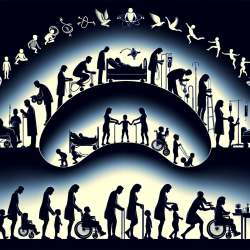The recent study titled "Genetic Variant in GRM1 Underlies Congenital Cerebellar Ataxia with No Obvious Intellectual Disability" has shed light on a rare genetic mutation that expands our understanding of congenital cerebellar ataxia. This discovery not only provides insights into the genetic underpinnings of the disorder but also opens avenues for practitioners to refine their therapeutic strategies.
The Role of GRM1 Gene in Neurological Disorders
The GRM1 gene encodes the metabotropic glutamate receptor 1 (mGluR1), which is vital for synaptic plasticity and motor control. This gene is predominantly expressed in the brain, especially in the cerebellum. Mutations in this gene have been linked to various forms of spinocerebellar ataxias. The study identifies a novel homozygous missense mutation in the GRM1 gene, leading to a unique form of congenital cerebellar ataxia without intellectual disability.
Implications for Practitioners
This groundbreaking research highlights several key takeaways for practitioners:
- Differential Diagnosis: Understanding the specific genetic mutations involved in cerebellar ataxia can aid in more accurate diagnoses, distinguishing between different forms of the disorder.
- Personalized Treatment Plans: Knowledge of specific genetic mutations allows for tailored treatment approaches that address individual patient needs more effectively.
- Early Intervention: Identifying genetic markers early can facilitate timely interventions that may improve outcomes for patients with cerebellar ataxia.
- Research Opportunities: The study encourages further exploration into the pleiotropic effects of GRM1 mutations, potentially linking them to broader neuropsychiatric conditions.
The Path Forward
The discovery of this GRM1 mutation underscores the importance of genetic research in understanding complex neurological disorders. It invites practitioners to delve deeper into genetic studies and consider how these findings can be integrated into clinical practice. By staying informed about such advancements, practitioners can enhance their diagnostic and therapeutic capabilities.










